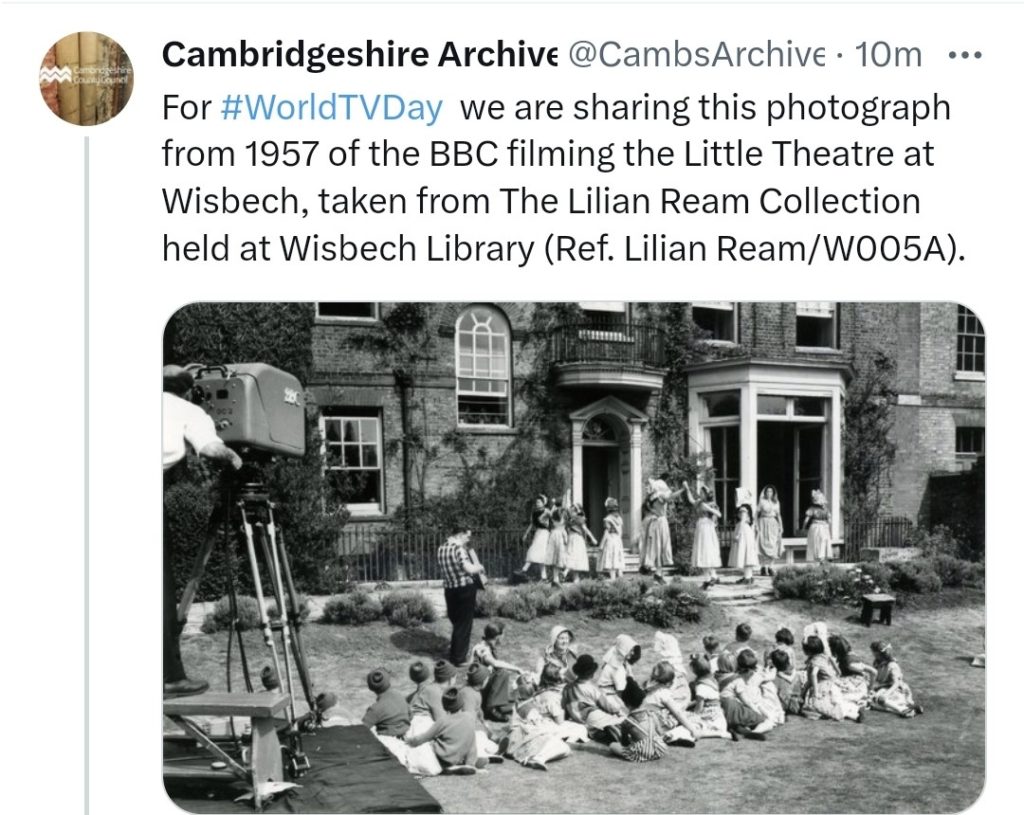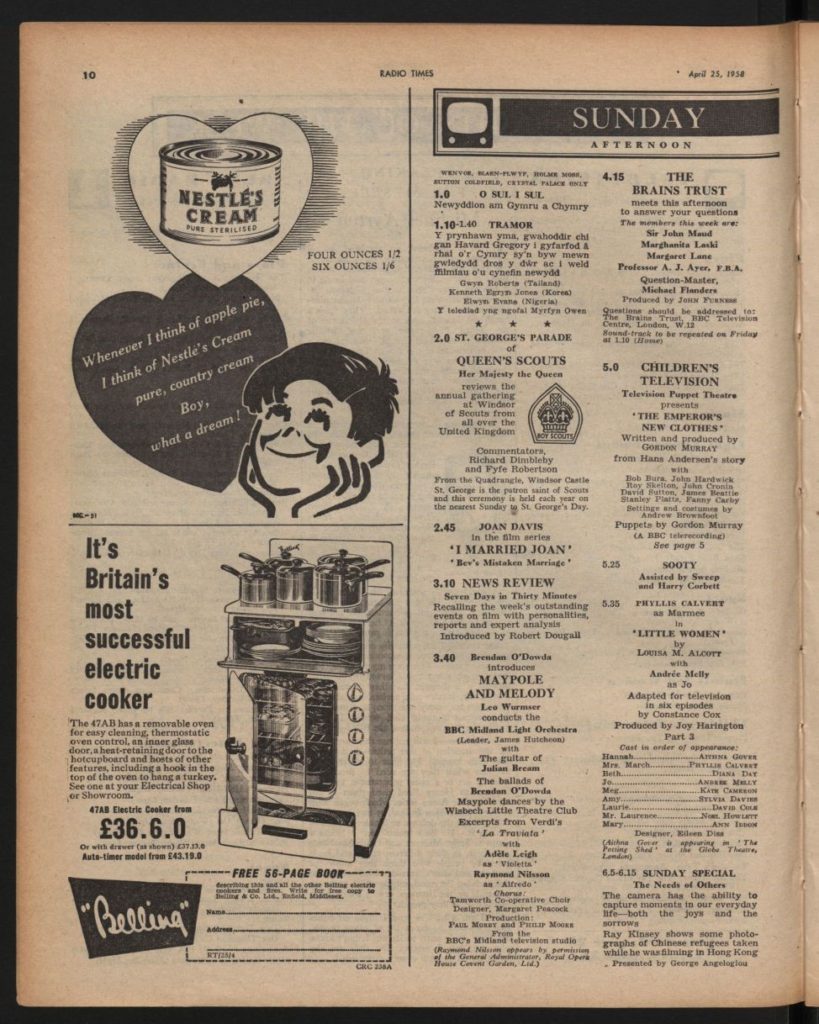Gary Critcher

Hi all, I spotted this picture and info on Twitter, thought you might like to see them.
That picture is of particular interest to me, not only because of the odd OB camera, but also because I was born in Wisbech and was living there at that time.
In those days it would presumably have been a live broadcast. I had a quick look on the BBC genome, but nothing came up for Wisbech in 1957.
Roger Long
It’s a film camera from TFS
Double system. Camera and recorder in one blimp
Pat Heigham
I’m not totally sure, but I think that it’s a blimped film camera – 35mm, possibly.
Although there is what looks like an output cable, so apologies if I’m wrong!
Nick Ware
I’m wondering if that actually is a video camera.
It looks to me, and judging by the easy-open housing cover, that it is in fact a blimped 35mm sep-mag film camera. I do remember 35mm Arri cameras (or was it Mitchell?) mechanically linked to a 35mm mag film sound recorder, all inside the same blimp. Multiple cables because the camera ran off a mains inverter, and the audio gubbins and mixer (such as it was) were all separate.
Plus the fact that the operator seems to be squinting through a film-camera-style optical viewfinder.
Could be wrong, but that and the wooden Vinten tripod all says “film” to me.
Alan Taylor
That was going to be my next question because I didn’t recognise the type of camera. It was quite unlike any video camera I had seen before.
I have now found that the show was actually transmitted in 1958 and the Radio Times listing states that the show was filmed.

Roger Long
It’s a P&ID blimp
Sepmag and 35 mm
Two man lift
Alan Taylor
It was the wooden tripod which initially persuaded me that it most likely came from the film world rather than the video world. I was puzzled by the size of the camera ( blimping explains that ) and what appeared to be a camera cable but was rather thin for a video camera cable.
On the Radio Times page later that day there is a children’s puppet show by Gordon Murray, who went on to create programmes such as Trumpton and Camberwick Green.
RT seemed to run from Sunday to Saturday in those days. The Saturday after the dancing film was transmitted was Cup Final day, but in a taster article about forthcoming sports events, the writer stated that his preference was for the motor racing from Silverstone, which was on before and after the cup final. Such talk would have been regarded as sacrilege in the days when I used to work on sport. Cup Final coverage had to be wall to wall from Breakfast time until the late evening.
The Cup Final itself was most likely a four camera OB, maybe with the Roving Eye to bring it up to five cameras. Coverage was directed by Alan Chivers, Silverstone by Barrie Edgar. Both will be remembered by many OB staff.
Pat Heigham
Talked to an-ex BBC Film Unit mixer with whom I worked a lot. He remembers that beast as being dual gauge – would run either 35 or 16mm picture,but with 35mm magnetic sound! He remembers that the quality of the audio was pretty ghastly!
My Dad was Army (REME) and he used to say that there were three ways of doing something: The right way, the wrong way and the Army way. This can be extended to: The right way, the wrong way and the BBC way.
Having got into the film industry, it was brilliant when Panavision cameras became
the norm as they were self-blimped and pretty quiet.


